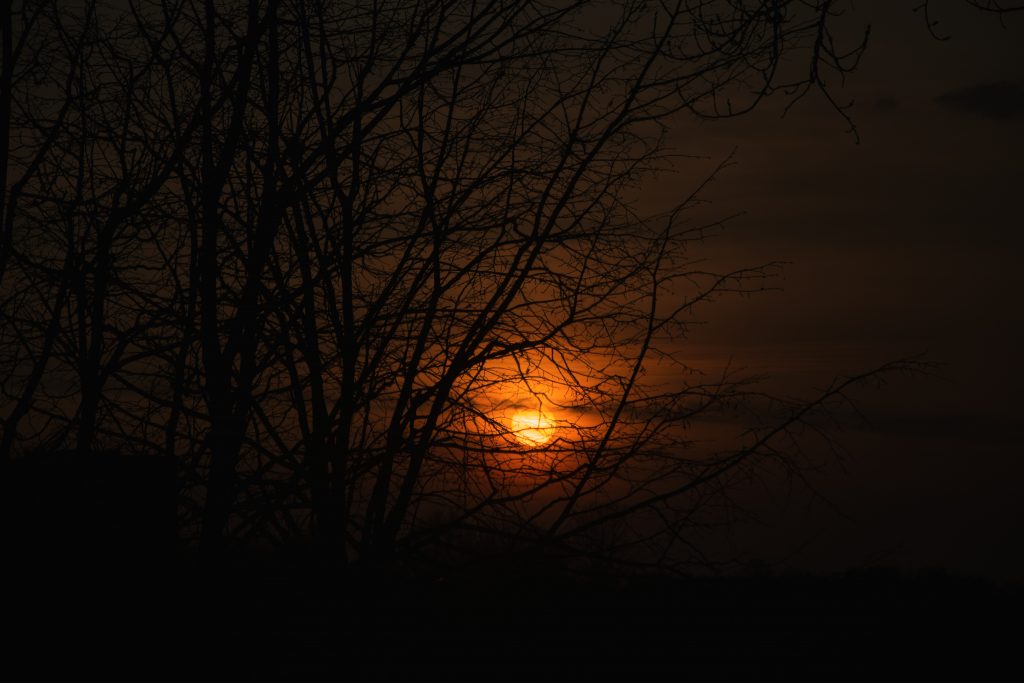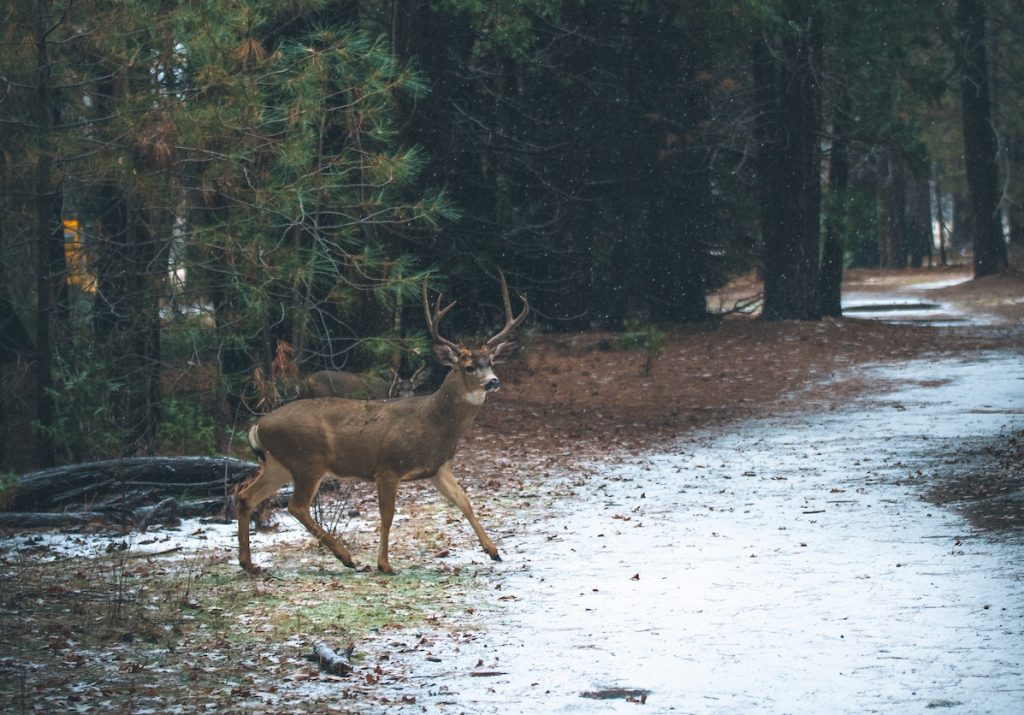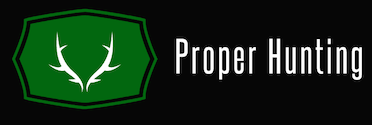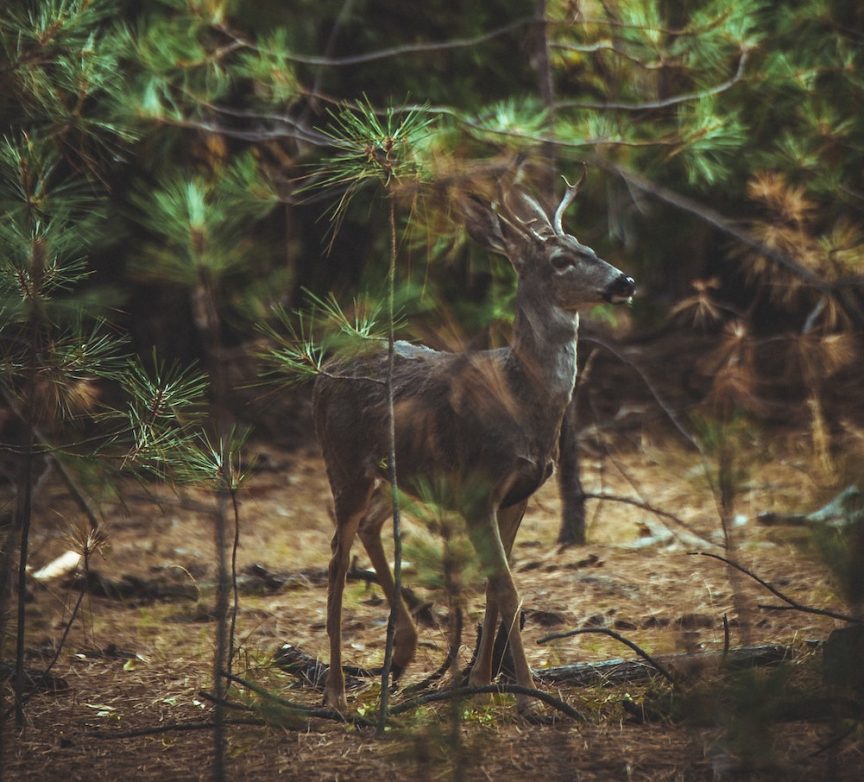Hunting at night is exciting and challenging. Skilled hunters will tell you that if you want a fruitful and eventful hunting season, you’d be better off on your stand than on your bed in the wee hours of the night. After all, most game animals are more active sometime between dusk and dawn……but wait! Unfortunately, there are state rules and regulations that prohibit you from hunting at night.
Is it legal to hunt deer at night?
Hunting laws and regulation are strictly implemented to prevent any slipups or accidents from happening. Hunting at night could pose many dangers to a hunter. Under

**The below are state specific night hunting laws, but they are always subject to change, so consult your local hunting regulations to make sure**
Below is a summary of the night hunting laws in all 50 states:
In Alabama, night hunting is absolutely not allowed. Doing a predatory call using any type of device while in possession of a firearm or a weapon during after-hours is prohibited. Utilization and possession of a bow or gun with a built-in or detachable light source is also banned. In addition, Alabama is also one of the 20 states that restrict even the use of any sort of night vision equipment.
In Alaska, it is legal to hunt deer at night. But the use of artificial lights are limited only from November 1 to March 31 and only between units 7 and 9-26 so it’s important to check the specs of your night vision scopes during purchase. A trapping license is also required to gain access to more hunting benefits.
In Arizona, they have very specific hunting rules. First off, every hunter needs a local hunting license. Night hunting is only allowed for coyotes in designated game management units from March 1 to May 31. The only weapon authorized to be used for the hunt is a shotgun, no more, no less. Mountain lions and raccoons could also be hunted in designated game management units at night. But unlike mountain lions that are available the whole year, raccoons could only be hunted from August 31 to March 31. Bobcats and foxes are totally off limits during the night. Electronic night vision equipment, thermal imaging devices, or any other light-producing apparatuses are also prohibited.
In Arkansas, only feral hogs are up to grabs without any sort of restriction. A canine hunting companion is a must when hunting bobcats. Coyotes and foxes are absolutely off limits. The use of any night vision instruments are only allowed for hunting feral hogs.
In California, hunting coyotes and foxes are only legal on private hunting grounds if the owner deems it so. Hunting on certain public areas are illegal. Night visions are allowed but any electronic viewing equipment that uses infrared or light-amplifying circuits are prohibited.
In Colorado, night hunting is allowed. But artificial light may only be utilized when hunting bobcats, foxes, beavers, skunks, and coyotes and private areas. A permit issued by the Colorado Division of Wildlife is required of you wish to use one on public areas.
In Connecticut, only raccoons and possums could be hunted at night with the use of night vision equipment.
In Delaware, hunting 30 minutes after sunset until 30 minutes before sunrise the next day is unlawful. Night vision equipment is prohibited. You can only pursue muskrats, raccoons, skunks, opossums, frogs, minks, foxes, and otters during the said time frame. Other animals such as coyote, is protected by the law and considered off limits.
In Florida, a gun & light permit and a night permit is required before you can hunt. Night hunting is only authorized on private properties. Wildlife Management Areas are obviously off limits. You are free to hunt just about any animal except foxes. You can only use artificial light on your hunting ventures if you have the permit. Night vision devices that do not emit any visible light are tolerated.
In Georgia, hunting alligators, foxes, coyotes, opossums, and raccoons at night are completely legal. Night vision equipment must be handheld and not attached to a vehicle.

In Hawaii, hunting 30 minutes after sunset until 30 minutes before sunrise is not allowed. Any night vision instruments are also denied.
In Idaho, it is allowed with the exception of raccoons and coyotes. The owner of a private hunting ground must give a written permission to make hunting them legal. Hunters are also required to get a spotlight permit from the Fish and Game office.
In Illinois, it is only allowed during fox season, which starts from November 10 to March 15. Night vision instruments and artificial lights, as long as it’s not fastened to a vehicle, are also accredited.
In Indiana, night hunting isn’t unlawful if the hunters are carrying a continuously burning light that could be spotted from at least 500 feet during the hunt.
In Iowa, hunting foxes, coyotes, bobcats, raccoons, opossums, and skunks at night time is considered legal. Night visions are allowed but artificial lights (even infrared lights) are not.
In Kansas, coyotes and furbearers are allowed to be hunted but without the use of artificial lights or night vision. Hand-held flashlights could only be used to obtain coyotes and furbearers that are already trapped or cornered by hunters with dogs and handguns.
In Kentucky, coyotes can be hunted at night. However, using artificial lights or night vision equipment are only permitted from February 1 to May 31. The only accredited firearm for hunting is a shotgun loaded with shells size T and below.
In Louisiana, hunting after-hours is allowed but the landowner must give their written permission and contact information first. The parish sheriff must also be informed 24 hours prior to the hunting session. Feral hogs, coyotes, armadillos, and beavers are only available 30 minutes the sunset of the last day of February until 30 minutes after the sunset of the last day of August. Any artificial light or night vision devices are also permitted.
In Maine, only coyotes and raccoons are to be hunted at night. From December 16 to August 31, a coyote night hunting permit is needed to pursue the hunt. The owner of said permit is entitled to hunt 30 minutes after sunset until 30 minutes before sunrise. Permit or not, all hunting activities must be ended on Saturday midnight and continue on Monday, a minute after midnight. Artificial lights and night vision are allowed. Any kind of predator calling devise is a must.
In Maryland, there seems to a schedule that dictates which animals could be hunted on specific dates. On October 15 to March 15, only opossums, raccoons, and coyotes could be hunted. On November 15 to January 31, only foxes could be hunted on the east of the Chesapeake Bay and Susquehanna River. On November 1 to January 19, only foxes could be hunted west of the Chesapeake Bay and Susquehanna River. All hunting activities on Sundays are prohibited the whole year. Night vision and laser range finders are considered legal. On the other hand, laser sights are absolutely not tolerated.
In Massachusetts, night hunting coyotes, opossums, foxes, and raccoons are only allowed several minutes close to midnight. But deer hunting during shotgun season is tolerated 30 minutes after sunset until 30 minutes before sunrise. Night vision are okay while artificial lights are not.
In Michigan, night hunting is allowed. Only hand-held lights (e.g. flashlights, headlamps, etc.) are accredited light sources.
In Minnesota, night hunting is allowed but the use of night vision is not. An artificial handheld light will be permitted from January 1 to March 15 but only if the hunter is: on foot, has a shotgun, has a calling device, and 200 feet away from a vehicle.
In Mississippi, bobcats, beavers, coyotes, nutrias, opossums, raccoons, and foxes are authorized to be hunted at night unless it’s spring turkey season. Night visions are also allowed.
In Missouri, night hunting is allowed. However artificial lights may only be utilized if you’re hunting bullfrogs, raccoons, or other furbearers already cornered by hunting dogs. Night vision are considered forbidden.
In Montana, it is only legal on private properties. A written permission from the owner of such properties is still required. Night vision equipment are accredited.
In Nebraska, both night hunting and using night vision scopes are legal.
In Nevada, night hunting isn’t unlawful but some seasons are exclusively for state residents. Rules about spotlighting vary from county to county.
In New Hampshire, it is legal but coyote hunting at night are restricted and could only happen from January 1 to March 31. Artificial lights are permitted unless they’re attached to a vehicle. Night vision is also okay.
In New Jersey, night hunting is only favored from January 1 to March 5 because it is fox and coyote permit season. The only weapon recognized is a shotgun so rifles are a no go. Artificial lights and night vision are authorized.
In New Mexico, hunters can only hunt an hour before sunrise until an hour after sunset so night hunting is considered illegal.
In New York, hunting furbearing animals at night are legal. Both artificial lights and night vision are also approved.
In North Carolina, hunting coyotes and feral hogs are allowed on private areas as long as the owners issued
In North Dakota, foxes and coyotes may be hunted at night but only on foot. The hunters are required to use a predator call and only natural light. That means that night vision instruments, artificial lights, or thermal imaging devices are a no go.
In Ohio, hunting between 6 pm to 6 am is okay but the hunters are enforced to keep a white light on that could be spotted from at least half a mile. Hunters who are after a coyote, fox, boar, or racoon can have a light with any color.
In Oklahoma, any furbearer is up for grabs except coyotes. Artificial lights attached on a vehicle and night vision devices are also prohibited.
In Oregon, night hunting is completely legal but handheld artificial lights could only be utilized when hunting raccoons, bobcats, and opossums. Night vision is only allowed for landowners or landowner agents hunting rabbits, coyotes, feral swines, and rodents on their own private properties. In any other cases, using night vision equipment isn’t tolerated.
In Pennsylvania, night hunting is allowed. Handheld or gun-mounted lights are only encouraged when hunting weasels, bobcats, raccoons, opossums, skunks, foxes, and coyotes on foot. Any type of night vision devices are considered illegal.
In Rhode Island, both night hunting and night vision equipment are deemed unlawful.
In South Carolina, hogs, armadillos, and coyotes may be hunted at night with or without the use of artificial lights and night vision instruments.
In South Dakota, coyotes, foxes, badgers, mink, raccoons, bobcats, and opossums could be hunted 24 hours. Artificial lights are only tolerated on private properties with consent of the owner. Night vision are extremely prohibited.
In Tennessee, opossums, bullfrogs, and raccoons are allowed to be hunted at night. Foxes and rabbits could only be chased, not killed, while furbearers could only be trapped. Any night vision gadgets are considered illegal.
In Texas, night hunting is allowed but only on private lands. The local game warden must also be notified first to inform of the details of the hunt. Night vision devices are not prohibited.
In Utah, the legality of night hunting varies from county-to-county. To figure out if night hunting is banned on your area, it’s better to contact the local officials to inquire.
In Vermont, hunting raccoons, skunks, coyotes at night is okay. Night visions and artificial lights are also tolerated unless your quarry is a raccoon or a skunk.
In Virginia, night hunting nutrias, coyotes, groundhogs, and feral hogs is authorized throughout the whole week except on Sundays. Only raccoons are available for hunting until 2 am, Sunday morning. Opossums, bobcats, raccoons, and foxes could only be hunted at night on selected seasons. The use of night vision scopes are permitted.
In Washington, only coyotes, raccoons, and bobcats are allowed to be hunted at night during specific seasons. Other animals are strictly off limits.
In West Virginia, hunting coyotes at night is only legal on January 1 to July 31. Red-colored artificial lights and night vision scopes are accredited.
In Wisconsin, night hunting is allowed. Night vision devices are not prohibited and the use flashlights are permitted when hunting on foot.
In Wyoming, it is only tolerated on private areas. A written permission must be issued by the landowners. Using night vision scopes and spotlights are approved.
You may be pretty bummed out if you just found out that night hunting is considered illegal in your state. But you have to understand that it’s probably for a good reason. Although penalizing night hunting might reduce a hunter’s chance of getting a kill, we cannot deny that it also reduces the danger for all of is in the process of doing so. Unlike your target animals, you’re not equipped with excellent night vision or hypersensitive instincts. Putting yourself in circumstances that could kill you or someone else is never
While you are here, you may want to check out:
- 5 Best Places To Hang A Tree Stand
- Meet Greg, the Author of Proper Hunting
- Best skinning knives of the year!

